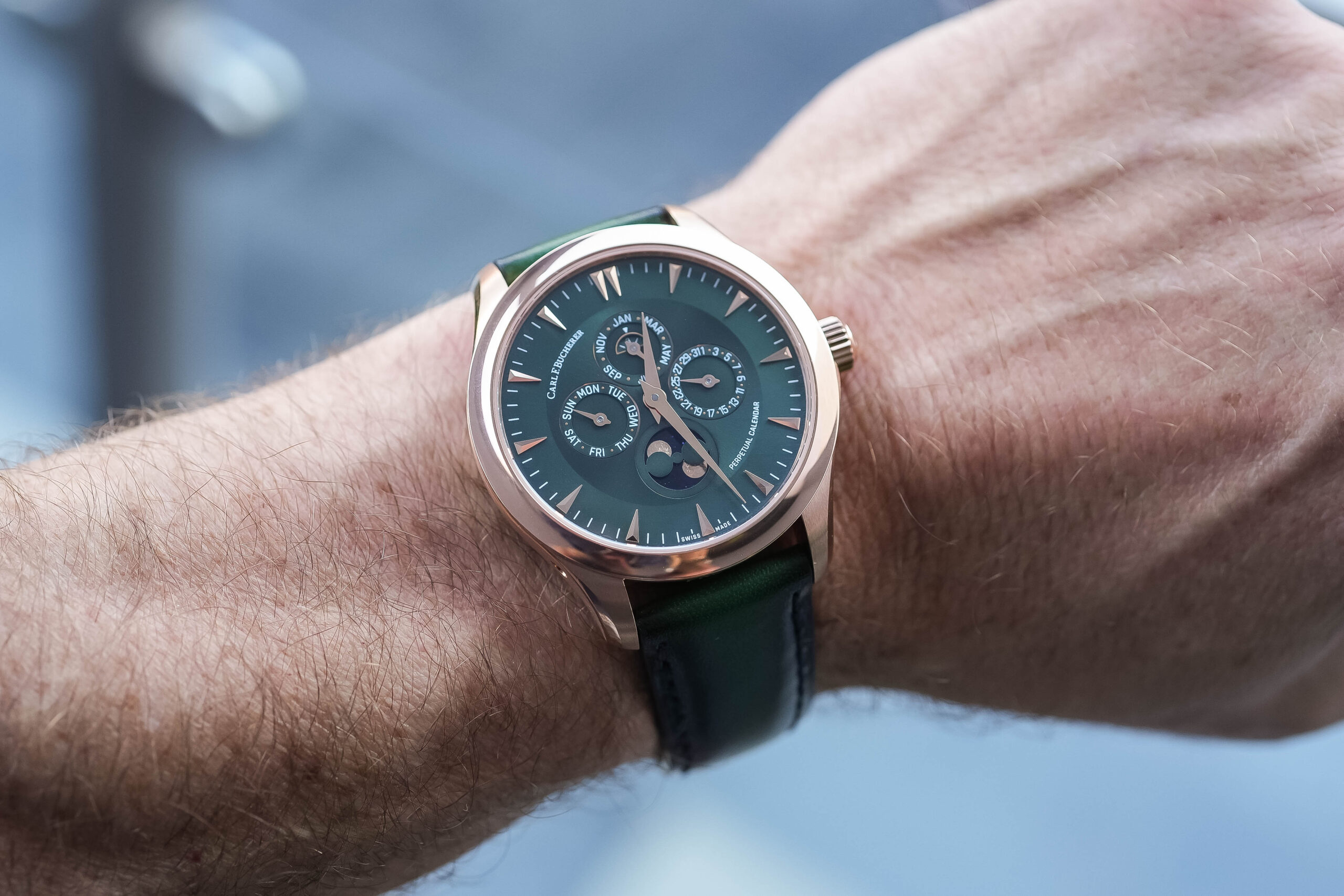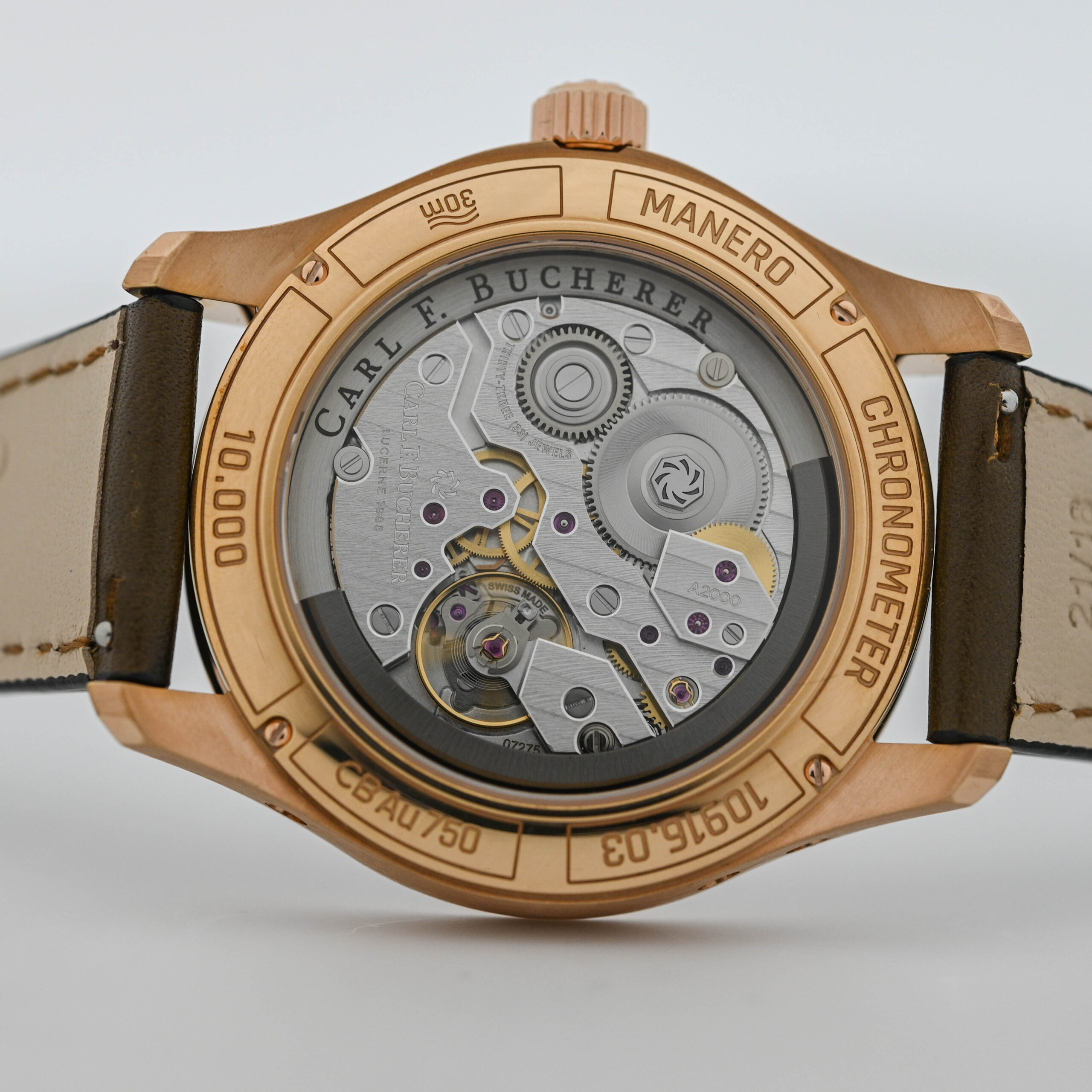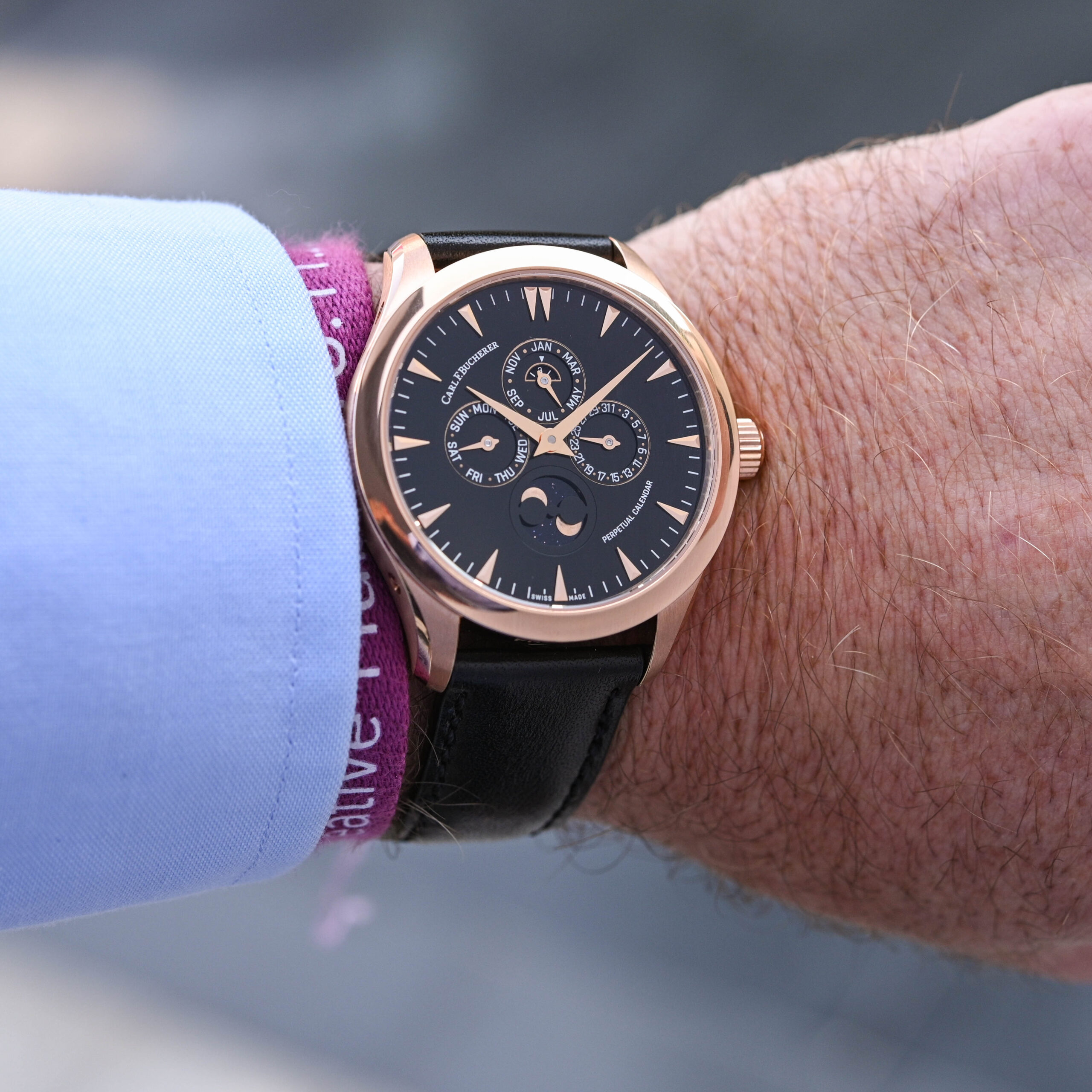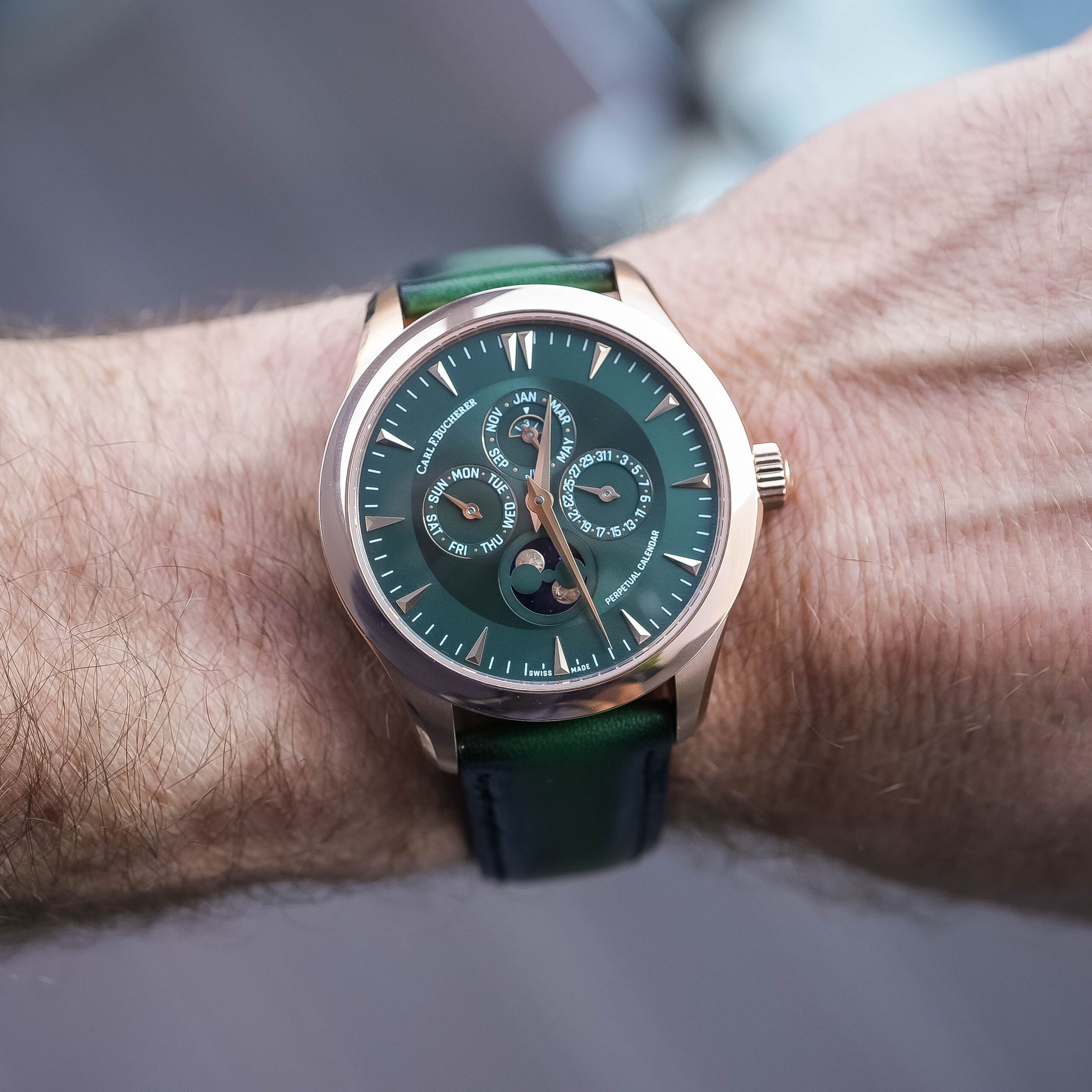The New Carl F. Bucherer Manero Peripheral Perpetual Calendar
The brand's perpetual calendar finally gets the signature peripheral technology.

Mostly known for being the brand of the peripheral technology, Carl F. Bucherer, within its Manero collection, is no stranger to complications. Ranging from petite complications such as a big date or a power reserve to a highly technical Triple Peripheral Minute Repeater, there’s room for multiple iterations. A function that hasn’t been overlooked by the brand is the perpetual calendar. Yet, the Manero QP was, until recently, powered by a traditional movement with a central rotor… Not really fitting the brand’s ethos. This year, Carl F. Bucherer launches the Manero Peripheral Perpetual Calendar, which combines a highly coveted complication with the brand’s in-house, chronometer-rated peripheral movement.
Looking at the brand’s latest releases, the Manero Peripheral Perpetual Calendar was somehow discreetly teased. Indeed, as part of the Capsule Collection of Black Watches, Carl F. Bucherer presented a perpetual calendar housed in a carbon fibre case and powered by the CFB A2000 movement, featuring the distinctive and desirable peripheral rotor, a hallmark feature of CFB. Up until now, the only perpetual calendar watch available from Carl F. Bucherer was this Manero, using an ETA 2892 with a Dubois-Depraz module on top. While there’s nothing wrong with this outsourced base movement, it surely wasn’t enough and the move to the in-house peripheral calibre certainly elevates the Manero QP to another level.
As a reminder, Carl F. Bucherer is often regarded as the master of the peripheral rotor. Despite not being the inventor of this technology (a patent applied in June 1955 by Paul Gosteli and another one in 1965 by Patek Philippe must be mentioned), CFB has done an impressive job in making the peripheral rotor its signature technology since 2009 and the launch of the Calibre A1000. While often seen in highly complex watches, CFB uses it even in three-hand watches. As a reminder, the winding mass is an annular segment mounted and swinging around the movement, instead of a centrally mounted oscillating weight rotating over the movement. This offers an unobstructed view of the movement along with providing the convenience of automatic winding and strong inertia.
What about the new Manero Peripheral Perpetual Calendar? Compared to the previous generation with its basic central rotor, many things have changed, and not only on the side of the movement. First, the watch has been redesigned with a sleeker look and new, fresh colours available. All 4 editions available at launch (incl. a limited version with pink dial, not photographed here) are housed in an 18k pink gold case, with the typical Manero look – polished concave bezel, brushed lugs and flanks, elegant polished bevel on the side of the lugs. For the occasion, the case has been slightly enlarged, now measuring 41.6mm in diameter with a reasonable thickness of 11.7mm. It features sapphire crystals on both sides and is 30m water-resistant.
The dial of the Manero Peripheral Perpetual Calendar also shows discreet but welcome evolutions compared to the previous generation. Available in black, green or taupe (and as said a fourth pink version), it has been streamlined with fewer printings and a simpler seconds track on the periphery. The dials now show a two-tone effect, with the central part of the dial sunray brushed and the chapter ring having an opaline finish. In the same vein, the wedge-shaped applied markers appear slightly smaller, or at least, the additional space offered by the enlarged case makes the whole dial more airy, and more open.
The sub-dials for the perpetual calendar have also been revamped slightly, in order to make them more legible and sleeker too. For instance, the leap year at 12 o’clock is now integrated into a small semi-circular window, resulting in a cleaner and more balanced design. A thin pink gold stripe also surrounds the sub-dials, which are doing without the snailed pattern of the previous generation. Finally, the moon indication has been revised, now displaying the two hemispheres with hand-engraved hemispheric rose gold moons on an aventurine background.
The main evolution, as said earlier in this first encounter with the new Manero Peripheral Perpetual Calendar, is the presence of the Calibre CFB 2000 as a timekeeping base. This movement, wound by a peripheral rotor, is produced in-house and comes with several notable features. Alongside the peripheral rotor mounted on three friction-less ceramic ball-bearings, this movement boasts a comfortable 55h power reserve and its precision is certified by the COSC. Also, the design of the movement is quite distinctive and highly rewarding, with its geometrically-cut bridges, resulting in a modern-looking and nicely finished movement. The perpetual calendar functions are performed by a well-known Dubois-Depraz module, a reliable technical base that unfortunately result in a display with slightly small counters.
To give the final touch, the 3 standard editions of the Manero Peripheral Perpetual Calendar – black, taupe and green – are worn on a original leather straps with a gradient colour effect. These are closed by a 18k rose gold pin-lock folding clasp.
The new Carl F. Bucherer Manero Peripheral Perpetual Calendar will be available from all CFB retailers, including Bucherer 1888 stores, and part of the permanent collection. Only the pink dial version is limited to 8 pieces and available exclusively through Bucherer 1888. The price is set at EUR 41,000 or CHF 43,000. For more details, please visit www.carl-f-bucherer.com.















1 response
41.000 for a Filippo Loreti looking watch . LMAO